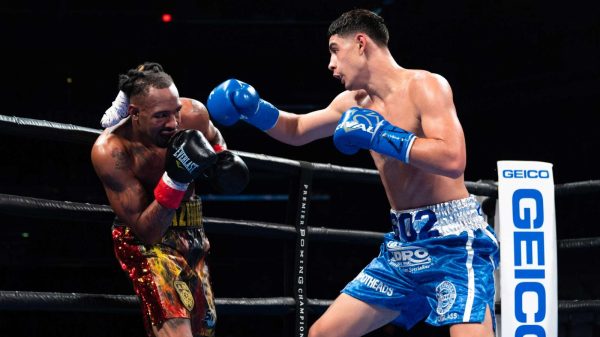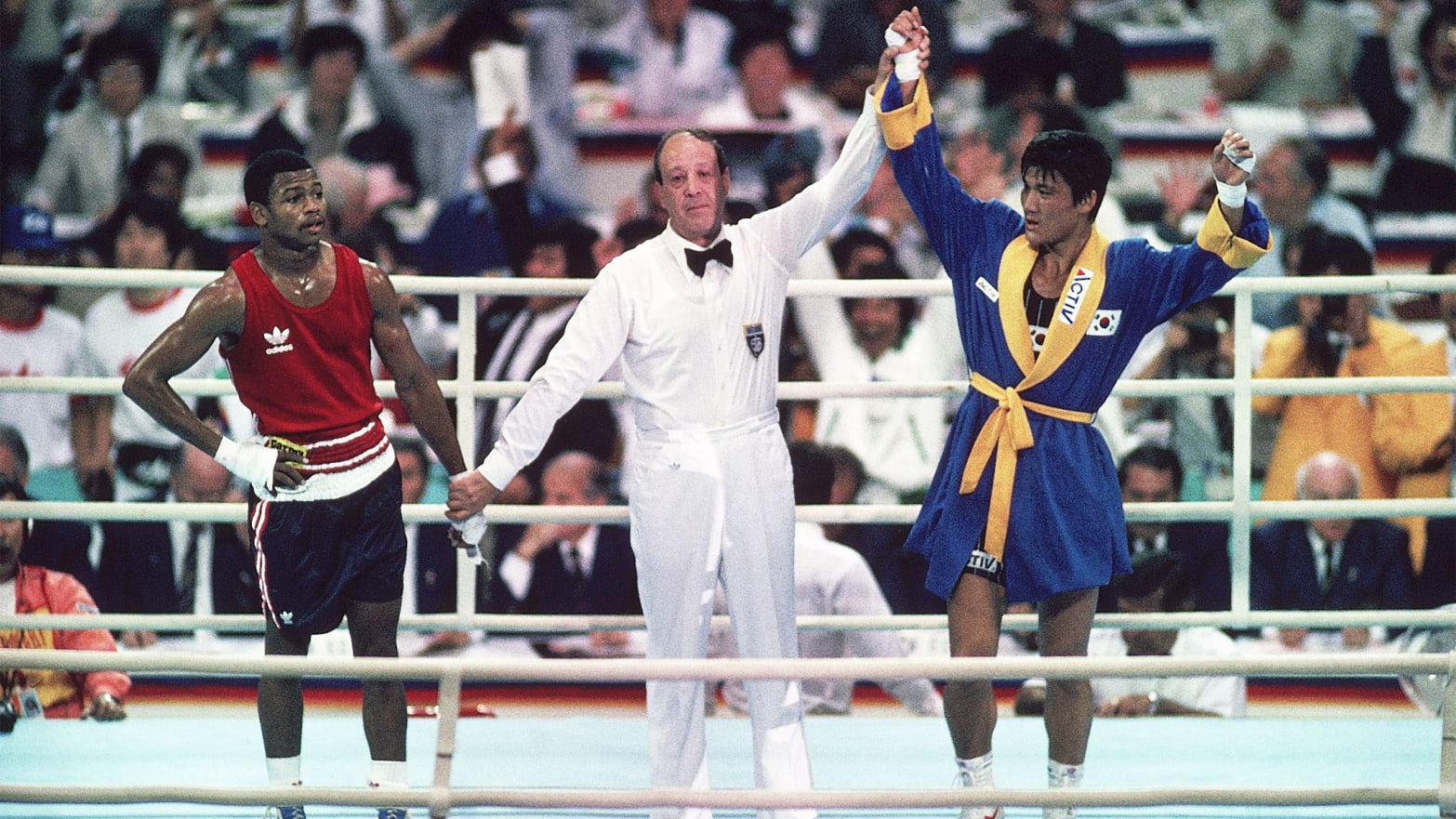In the dynamic world of boxing, weight classifications play a crucial role, yet they often lead to confusion among fans, both seasoned and new. At first glance, the array of divisions might seem overwhelming, but understanding the structure and purpose behind these categories sheds light on the sport’s intricate balance of fairness, competition, and strategy.
Boxing weight classes serve as a foundation to ensure matches are fair and competitive. The concept is straightforward: grouping fighters based on their weight prevents mismatches where a larger, heavier competitor might have an undue advantage over a smaller, lighter opponent. This leveling of the playing field enhances the sport’s appeal, focusing the competition on skill, speed, and strategy rather than sheer size.
A brief history on boxing weight classifications
Historically, boxing started with just a handful of weight divisions. However, as the sport evolved, the need for more specific categories became apparent. This expansion aimed to create more opportunities for fighters and to fine-tune the competitive balance. Each class, ranging from the lightest, known as Minimumweight, to the heaviest, termed Heavyweight, encapsulates a specific weight range. Fighters must weigh in within these limits to compete in a particular division, adding a layer of strategy to pre-fight preparations.
The proliferation of weight classes also mirrors the sport’s global growth. With more athletes from around the world entering the ring, the diversity in body sizes and fighting styles has broadened. This diversity necessitated a more granular classification system to accommodate the varying physiques and techniques of fighters, ensuring that bouts remain as fair and competitive as possible.
Moreover, the creation of multiple divisions has opened the door to a wider array of championship titles and bouts, increasing the sport’s overall excitement and appeal. Fighters now have the chance to claim titles across different weight classes, adding to their legacy and the sport’s rich history.
To demystify the complex landscape of boxing’s weight divisions, we’ve included a comprehensive boxing weight classes chart with this article. This visual guide serves as an invaluable tool for both aficionados and novices, offering a clear and concise overview of each weight category, from the nimble warriors of the Flyweight division to the towering titans of the Heavyweight class. Whether you’re a seasoned fan looking to deepen your understanding or a newcomer eager to grasp the basics, this chart illuminates the structure and nuances of boxing’s competitive framework, making the sport’s intricate classification system accessible and straightforward.
Highlighting Boxing’s Glamor Divisions
The glamor divisions in boxing, notably the Heavyweight, Middleweight, and Welterweight classes, stand out as the sport’s most captivating and prestigious categories. These divisions have historically drawn the greatest fanfare, the most exceptional talent, and substantial financial stakes, largely due to the iconic fighters and legendary bouts they’ve hosted.
The existence of glamor divisions traces back to boxing’s early days, evolving with the sport’s popularity. The Heavyweight division, with its allure of raw power and knockout prowess, has always been a centerpiece of boxing glamor, dating back to the late 19th and early 20th centuries. Figures like Jack Dempsey, Joe Louis, and later Muhammad Ali brought an unmatched level of excitement and charisma to the division, cementing its status at the pinnacle of the sport.
Middleweight and Welterweight divisions, while not always commanding the same universal spotlight as the Heavyweights, have contributed their share of drama and skill to the boxing scene. Since the mid-20th century, these weight classes have seen an influx of versatile and technically skilled boxers, making them hotbeds for some of the most strategic and thrilling matchups in boxing history. Fighters in these divisions often possess a blend of speed, agility, and power, offering a dynamic and engaging style of combat that appeals to purists and casual fans alike.
The glamor divisions have persisted through the decades, driven by their ability to produce compelling narratives, rivalries, and a level of athleticism that captures the essence of boxing. Their enduring appeal lies in the mix of physicality, technique, and the larger-than-life personalities of their competitors, which continue to draw significant attention and investment from within the sport and its global audience.
Flyweight Mastery Under 112 Pounds
The Flyweight division, recognized as one of the original eight weight classes in boxing, holds a unique position in the sport’s landscape. Although it might not command the same widespread attention as its heavier counterparts, the Flyweight division has been a cornerstone of boxing, showcasing the incredible speed, agility, and technical skill that lighter fighters bring to the ring.
Established in the early 20th century, the Flyweight division encompasses fighters weighing up to 112 pounds (51 kg). This class has been the starting point for many pugilists who later moved up to higher weight categories, but its own history is rich with athletes who have made significant impacts within the division itself. The lighter weight allows for a pace and rhythm in bouts that are markedly different from those of heavier classes, with an emphasis on rapid movements, quick combinations, and endurance.
Over the years, the Flyweight division has been home to some of the sport’s most memorable figures and fights. Legends like Jimmy Wilde, known as “The Ghost with the Hammer in His Hand,” set the standard for excellence in the early days, combining remarkable knockout power with elusive movement. In more recent times, fighters such as Pongsaklek Wonjongkam from Thailand and Roman “Chocolatito” Gonzalez from Nicaragua have carried on the tradition of excellence in the Flyweight division, engaging in battles that have thrilled boxing aficionados and brought international attention to the weight class.
Characteristics of Flyweight
The division’s global appeal is one of its defining characteristics. It has been particularly popular in regions such as Latin America, Asia, and the United Kingdom, where smaller fighters have found large, passionate followings. This widespread popularity has led to a rich diversity of styles within the division, from the technical prowess displayed by Japanese and Filipino boxers to the aggressive, forward-pressing style often seen in Latin American fighters.
Skill, heart, and determination transcend size, as demonstrated by the Flyweight class, the lightest of the original glamor divisions. The fighters in this division exemplify the artistry of boxing, with their ability to deliver rapid-fire combinations, exhibit exceptional footwork, and maintain a high level of energy throughout the full duration of their bouts. The Flyweight division remains a testament to the sport’s depth and diversity, offering a unique spectacle that underscores the essence of boxing: a blend of physical conditioning, mental strategy, and sheer human will.
Bantamweight Battles at 118 Pounds
The Bantamweight division, situated just above Flyweight, represents another vital category in the rich tapestry of boxing. This division, encompassing fighters weighing up to 118 pounds (53.5 kg), is named after the Bantam breed of chicken, known for its small size but aggressive and spirited nature—a fitting metaphor for the fighters who compete in this weight class. They adopted the term “Bantamweight” to convey the combination of compact size and tenacious fighting spirit found in this division.
Originating in the late 19th century, the Bantamweight division quickly established itself as a platform for fighters who possessed a blend of the speed seen in the lighter Flyweights and a hint of the power characteristic of heavier classes. This unique combination has made Bantamweight bouts known for their intensity, technical skill, and fast-paced action, captivating audiences with a dynamic display of boxing prowess.
Bantamweight Division History
Throughout its history, the Bantamweight division has been a stage for numerous legendary boxers who have left an indelible mark on the sport. Figures such as George Dixon, the first black world boxing champion in any weight class, and later, Éder Jofre of Brazil, revered for his formidable skill and heart, have helped to elevate the status of the Bantamweight division. More recently, fighters like Nonito Donaire from the Philippines and Naoya Inoue from Japan have continued to bring global attention to the division with their remarkable careers and memorable battles inside the ring.
The Bantamweight division’s appeal is not only due to the exciting fights and talented boxers it produces but also because it embodies the essence of what many consider the sweet science of boxing. The fighters in this class must master the delicate balance between speed and power, offense and defense, agility and precision. This balance demands a high level of skill and adaptability, making Bantamweight contests some of the most strategically intriguing in the sport.
Moreover, the Bantamweight division has played a significant role in boxing’s international appeal, with champions hailing from every corner of the globe. This diversity has introduced a variety of fighting styles and strategies to the division, enriching the sport and providing fans with a wide array of fighting techniques and approaches to appreciate.
In essence, the Bantamweight division, with its spirited and skilled competitors, continues to be a pivotal part of boxing’s allure. It stands as a testament to the sport’s ability to blend physicality with strategy, offering a compelling spectacle where the smallest fighters often deliver the most enthralling performances.
Featherweight Finesse Up to 126 Pounds
The Featherweight division, with fighters weighing up to 126 pounds (57.2 kg), occupies a distinctive place in boxing’s hierarchy, blending the lightning-fast pace of the lighter classes with a discernible increase in power. The term “Featherweight” implies lightness and agility. Athletes in this division are celebrated for swift movements and finesse.
Emerging in the late 19th century, the Featherweight class has been a central feature of boxing, showcasing some of the sport’s most technically adept and versatile fighters. The division’s history is adorned with legendary names who have captivated fans with their skill, resilience, and indomitable spirit. One of the early icons, Willie Pep, known for his incredible defensive skills and footwork, famously claimed to have won a round without throwing a single punch, epitomizing the strategic depth that Featherweights can bring to the sport.
In more recent years, the Featherweight division has continued to be a hotbed of talent, with fighters like Salvador Sanchez, Prince Naseem Hamed, and Manny Pacquiao (before moving up in weight) providing some of the most memorable moments in boxing history. Their battles have underscored the unique blend of speed and strength that defines the Featherweight class, offering bouts filled with tactical nuance, swift combinations, and the ever-present potential for a fight-ending punch.
The Cross Roads of the Light Divisions
The global appeal of the Featherweight division is undeniable, with champions and contenders emerging from every continent. This universality has introduced a rich diversity of fighting styles to the division, from the precision and timing favored by American and European boxers to the aggressive, forward-moving tactics often seen in fighters from Latin America and Asia. This melting pot of techniques makes the Featherweight division one of the most unpredictable and exciting in the sport.
Featherweight fighters must combine agility and speed with increased focus on power and endurance. The physical demands of this weight class push athletes to excel in all aspects of the sport, from footwork and defense to power punching and combination striking. This high level of all-around ability makes Featherweight contests a showcase of boxing at its most refined, with fighters displaying a masterful command of the sport’s strategic and physical demands.
The enduring legacy of the Featherweight division lies in its ability to produce fights that are as thrilling as they are technical. It remains a testament to the sport’s complexity, where heart and skill meet in a perfect storm, creating moments of pure boxing artistry that resonate with fans around the world.
Lightweight Showdowns Within 135 Pounds
The Lightweight division, where boxers weigh up to 135 pounds (61.2 kg), stands as a pivotal category in the pantheon of boxing. This division marks a significant transition within the sport, blending the high-speed action of the lighter classes with a palpable increase in hitting power. Lightweights are known for their ability to deliver fast-paced, action-packed fights, often with the added drama of knockout power that becomes more prominent in this and heavier divisions.
The origins of the Lightweight division trace back to the early days of organized boxing, and over the decades, it has been a showcase for some of the sport’s most dynamic and versatile talents. The division’s history is rich with storied champions who have exemplified the balance between agility, technical skill, and power. Figures such as Benny Leonard, known as “The Ghetto Wizard,” set early benchmarks for excellence with his superb boxing IQ and ring generalship. Later, icons like Roberto Duran brought a fierce intensity and formidable power to the Lightweight ranks, earning him the moniker “Hands of Stone.”
Recent History of the Lightweight division
In more recent times, the Lightweight division has continued to thrive, producing a steady stream of compelling matchups and rising stars. Fighters like Pernell Whitaker, with his elusive defensive style, and Floyd Mayweather Jr., whose tenure in the division showcased his unparalleled skill set, have added to the Lightweight legacy. Today, the division remains a hotbed for talent, with champions and contenders consistently providing some of the most technically sound and exciting fights in the sport.
The universal appeal of the Lightweight division is evident in its diverse pool of fighters from across the globe, bringing different boxing philosophies and styles to the forefront. This diversity leads to a rich variety of matchups, where traditional boxing techniques can clash with more aggressive, power-based approaches, creating unpredictable and enthralling contests.
Lightweights are often at the peak of their physical capabilities, combining the endurance and speed of their lighter counterparts with a significant increase in power. This unique blend forces fighters to adapt and evolve, honing their skills to balance offensive aggression with defensive acumen. The division demands a high level of technical proficiency and physical conditioning, as the margin for error becomes narrower with the increased potential for fight-ending punches.
The Lightweight division’s enduring popularity and significance in boxing are rooted in its perfect storm of speed, skill, and power. It continues to be a cornerstone of the sport, where emerging talents and seasoned veterans alike can showcase the full breadth of their abilities, contributing to the ever-evolving narrative of boxing’s rich history.
Welterweight Wars at the 147-Pound Mark
The Welterweight division, where fighters weigh up to 147 pounds (66.7 kg), is one of boxing’s most storied and competitive categories. The term “welterweight” originates from the old English word “welter,” which refers to a heavy, tumultuous roll or movement, akin to the turmoil of the sea. This etymology beautifully encapsulates the dynamic and often turbulent nature of the fights within this weight class, where the blend of speed, technical skill, and power reaches a compelling crescendo.
Historically, the Welterweight division has been a breeding ground for some of boxing’s most legendary figures and epic battles. The division began to emerge as a distinct category in the early 20th century, with its roots tracing back to that time. Over the years, it has showcased a wide array of fighting styles and strategies, reflecting the diverse skill set required to compete at this level. Fighters in this division have demonstrated adaptability, often combining the speed and agility of lighter classes with a significant increase in punching power.
The legacy of the workhorse division
The legacy of the Welterweight division is adorned with iconic names that have become synonymous with the sport itself. From the relentless aggression and iron chin of Roberto Duran, who moved up from Lightweight to conquer the Welterweight scene, to the unparalleled defensive genius and sharp counterpunching of Floyd Mayweather Jr., the division has been home to a diverse range of champions. Sugar Ray Leonard’s electrifying speed and combination punching, alongside Manny Pacquiao’s explosive power and frenetic pace, have added to the rich tapestry of Welterweight history, providing fans with some of the most unforgettable moments in boxing.
The Welterweight division’s enduring appeal lies in its perfect balance between the athleticism and finesse of lighter weight classes and the knockout potential more common in heavier divisions. This balance creates a fertile ground for tactical battles that require not just physical prowess but also a deep strategic understanding of the sport. The division demands a high level of versatility from its competitors, making Welterweight fights a showcase of boxing’s multidimensional nature.
Globally, the Welterweight division has enjoyed immense popularity, with champions hailing from every corner of the world. This global representation has brought a rich diversity of boxing styles and philosophies to the division, from the slick movement and defensive skills often seen in American boxing to the aggressive, forward-pressing style favored by many Latin American fighters. This convergence of styles makes the Welterweight division one of the most unpredictable and exciting in boxing, where any fight has the potential to become an instant classic.
Middleweight Clashes at 160 Pounds
The Middleweight division, with its fighters tipping the scales at up to 160 pounds (72.6 kg), stands as a testament to boxing’s rich heritage of combining brute strength with refined skill. This division, nestled in the heart of the sport’s weight categories, serves as a battleground where the speed and agility of lighter fighters meet the formidable power of the heavier classes, creating a unique blend of athleticism and tactical prowess.
The term “Middleweight” itself is straightforward, denoting fighters who are in the middle range of weight classes, yet the division’s impact on boxing is anything but ordinary. It has been the stage for some of the most iconic figures and memorable moments in boxing history, showcasing a level of versatility and competitive depth unmatched by many other categories.
Unrivaled History in the Middleweight Divsion
Historically, the Middleweight division has been a showcase for fighters who possess an exceptional balance of speed, power, and technical ability. Legends like Sugar Ray Robinson, often cited as the greatest boxer of all time, have dazzled fans in the division with unparalleled skill, fluid movement, and devastating combination punches. The 1980s brought the era of the “Four Kings”—Marvin Hagler, Thomas Hearns, Roberto Duran, and Sugar Ray Leonard—whose epic battles against each other are etched in boxing lore, further elevating the prestige of the Middleweight division.
In more recent years, the Middleweight division has continued to captivate the boxing world with standout talents like Bernard Hopkins, whose tactical genius and longevity in the sport set new records, and Gennady Golovkin, known for his fearsome punching power and aggressive fighting style.The division’s appeal is boosted by high-profile bouts attracting global attention. Canelo Alvarez’s fights demonstrate its relevance.
The allure of the Middleweight division lies not only in the caliber of its champions but also in the diversity of fighting styles it accommodates. Fighters in this division must adapt to a wide range of opponents, from the swift and elusive to the powerful and direct, making versatility a key attribute for success. This has resulted in a rich variety of tactical matchups, testing both brains and brawn equally.
Moreover, the Middleweight division draws fans from various boxing enthusiasts. Purists appreciate technical nuances; casual followers enjoy explosive power.
Light Heavyweight Duels to 175 Pounds
The Light Heavyweight division, where combatants compete at a maximum of 175 pounds, strikes a compelling balance between agility and power, distinguishing it as one of boxing’s most dynamic categories. This division is characterized by fighters who possess the quickness and technical skills reminiscent of those in lower weight classes, combined with a significant increase in knockout capability.
Over the years, the Light Heavyweight division has been the proving ground for some of boxing’s most versatile and powerful athletes. The division has seen legends who have adeptly combined the finesse required in lighter divisions with the formidable strength expected of the heavier classes. Fighters such as Archie Moore, with his remarkable record for knockouts, and Bob Foster, celebrated for his dominating presence and powerful punches, have helped define what it means to be a Light Heavyweight champion.
In more recent history, the division has continued to captivate audiences with standout talents like Roy Jones Jr., whose exceptional speed, power, and ring IQ made him one of the most dominant fighters of his time. The division remains a hotbed for high-caliber talent, with fighters like Sergey Kovalev and Andre Ward having contributed to its legacy through their technical skill, strategic acumen, and compelling matchups.
Power and Finesse
The Light Heavyweight division is particularly noted for its thrilling bouts, which often feature a blend of tactical boxing and the ever-present potential for sudden, fight-ending power. This unique mix ensures that Light Heavyweight contests are filled with tension and unpredictability, as fighters must navigate the dual demands of engaging with power while also employing strategic defense and counterpunching.
Moreover, the division serves as a critical junction in a fighter’s career, often hosting athletes transitioning from Middleweight in pursuit of greater challenges or Heavyweights seeking more speed and technical competition. This influx of diverse talents keeps the division fresh and competitive, with a constant stream of intriguing matchups that showcase the best of both speed and strength in boxing.
The enduring appeal of the Light Heavyweight division lies in its capacity to deliver bouts that are as technically rich as they are physically imposing. It’s a category where the art of boxing is on full display, marrying the cerebral aspects of the sport with the raw physicality that draws fans to the ring. As such, the Light Heavyweight division continues to be a vital and vibrant part of the boxing landscape, offering a unique spectacle that celebrates the multifaceted nature of the sweet science.
Heavyweight Titans Beyond 200 Pounds
The Heavyweight division, where there is no upper weight limit, stands as the pinnacle of boxing’s traditional weight classes, often capturing the imagination of the wider public like no other. This division is synonymous with raw power, resilience, and some of the most iconic figures in the sport’s history. The allure of the Heavyweight champion, often dubbed “The Baddest Man on the Planet,” resonates beyond the confines of boxing, embodying the ultimate test of strength and fortitude in hand-to-hand combat.
The lineage of Heavyweight greats reads like a who’s who of boxing royalty, with legendary names such as Jack Johnson, Joe Louis, Muhammad Ali, George Foreman, Mike Tyson, and Lennox Lewis echoing through the annals of the sport. These fighters have not only dominated within the ropes but have also become cultural icons, their battles and personas transcending the sport to impact society at large.
The Power Division
The Heavyweight division’s hallmark is its capacity for dramatic, fight-altering power. Fights within this class often hinge on the ability of boxers to deliver and withstand punishing blows, leading to some of the most unforgettable knockouts in sports history. However, to view the Heavyweight division as solely a showcase of power would be an oversimplification. The best Heavyweights also possess remarkable speed, agility, and technical skill, attributes not always associated with fighters of larger stature but crucial for success at the highest level.
In recent years, the Heavyweight division has experienced a resurgence, with a new generation of boxers revitalizing the competitive landscape. Fighters like Anthony Joshua, Tyson Fury, and Deontay Wilder have brought renewed attention and excitement to the division, engaging in high-profile bouts that hark back to the division’s golden ages. Their diverse styles — from Fury’s elusive movement and Wilder’s devastating right hand to Joshua’s balanced blend of power and technique — highlight the dynamic nature of modern Heavyweight boxing.
The Crown Jewel of Boxing
The global appeal of the Heavyweight division is unparalleled, with champions often becoming global ambassadors for the sport. This worldwide interest ensures that Heavyweight bouts are among the most anticipated and watched events in the sporting calendar, attracting fans from across the globe and from all walks of life.
The Heavyweight division embodies the essence of boxing’s appeal — a dramatic clash of power, skill, and will, where the stakes are as high as the weights are heavy. It remains a symbol of the ultimate boxing achievement, where victory brings with it a legacy that often extends far beyond the ring.
Navigating New Divisions: Bridgerweight, Cruiserweight, Strawweight
In addition to the traditional weight divisions that have long defined the contours of professional boxing, the sport has evolved to include new categories like Strawweight, Bridgerweight, and Cruiserweight, each serving to further refine the competitive landscape. Strawweight, the lightest of all classes, allows boxers up to 105 pounds to showcase their speed and agility, offering a platform for the smallest fighters to achieve global recognition. Cruiserweight, established to bridge the gap between Light Heavyweight and Heavyweight, accommodates fighters up to 200 pounds, providing a space for those who possess a blend of speed and power but may not have the sheer mass for the Heavyweight division.
The most recent addition, Bridgerweight, named in honor of a brave young boy named Bridger Walker who saved his sister from a dog attack, is set between Cruiserweight and Heavyweight, capping fighters at 224 pounds. This new class aims to create a more level playing field for those who find themselves too heavy for Cruiserweight but at a disadvantage against the super-sized Heavyweights of the modern era. Together, these new divisions enhance the sport’s inclusivity and competitive balance, ensuring fighters of all sizes have a fair shot at glory.
Strawweight Showdowns Within 105 Pounds
The Strawweight division, also known as Minimumweight, marks the lightest category in professional boxing, accommodating fighters who weigh no more than 105 pounds (47.6 kg). This division was formally adopted by major boxing organizations in the late 20th century, with the International Boxing Federation (IBF) being the first to recognize a Strawweight champion in 1987. The creation of the Strawweight division was driven by the need to provide a competitive platform for smaller fighters, ensuring that athletes at the lower end of the weight spectrum could compete for world titles and achieve recognition on a global scale.
The inception of the Strawweight division was a significant step towards inclusivity in boxing, acknowledging the vast diversity in athletes’ physiques and offering opportunities to those who, due to their size, had previously been marginalized within the sport. By establishing this division, boxing organizations aimed to level the playing field, allowing smaller fighters to showcase their speed, agility, and technical skills without being overshadowed by larger opponents.
Strawweights seperating themselves already
Over the years, the Strawweight division has seen several standout fighters who have made their mark and brought attention to the category. Among them, Ricardo Lopez stands out as one of the most notable champions. Lopez, also known as “Finito,” dominated the division in the 1990s, retiring undefeated and establishing himself as one of the greatest Minimumweight fighters of all time. His remarkable skill set, combined with an impeccable record, set a high standard for excellence in the division.
More recent standouts include Wanheng Menayothin from Thailand, who surpassed Floyd Mayweather Jr.’s 50-0 record, showcasing the high level of competition and talent within the Strawweight ranks. Menayothin’s achievements have not only highlighted the division’s competitive nature but also underscored the global reach of boxing, with talent emerging from all corners of the world.
The Strawweight division continues to be a vital part of professional boxing, providing a stage for some of the sport’s most dynamic and technically proficient fighters. Its creation and the success of its champions underscore boxing’s adaptability and commitment to inclusivity, ensuring that athletes of all sizes have the opportunity to achieve greatness within the sport.
Cruiserweight Battles Capped at 200 Pounds
The Cruiserweight division, established to bridge the considerable gap between the Light Heavyweight and Heavyweight categories, accommodates fighters weighing up to 200 pounds (90.7 kg). This division was officially recognized in the late 1970s and early 1980s, with the World Boxing Association (WBA) being the first major organization to inaugurate a Cruiserweight champion in 1980. The creation of the Cruiserweight division was motivated by the need to provide a competitive platform for fighters who were too heavy for the Light Heavyweight division but at a distinct disadvantage against the larger Heavyweights, who can weigh significantly more.
The establishment of the Cruiserweight division marked a pivotal moment in the sport, addressing the evolving physique of boxers and ensuring fairer, more balanced competitions. By doing so, boxing organizations acknowledged the changing landscape of the sport, where athletes’ sizes and training regimens were producing fighters who no longer fit neatly into the existing weight class structure.
A Bridge to the Heavyweight Division
Over the years, the Cruiserweight division has produced some of the most exciting and talented fighters in boxing. One of the early standouts was Evander Holyfield, who became the division’s undisputed champion before moving up to Heavyweight, where he achieved even greater fame. Holyfield’s success at Cruiserweight laid the foundation for the division’s reputation as a reservoir of talent capable of making significant impacts at higher weights.
In more recent times, the Cruiserweight division gained attention with the World Boxing Super Series, a tournament that showcased the division’s top talent. Fighters like Oleksandr Usyk emerged from this platform, dominating the Cruiserweight scene before transitioning to Heavyweight. Usyk’s technical skill, combined with his speed and agility, made him one of the most formidable champions in Cruiserweight history, underscoring the division’s ability to produce world-class talent.
The Cruiserweight division continues to play a crucial role in the boxing ecosystem, offering a space for fighters who embody the combination of speed, power, and technical skill. Its creation has enhanced the sport’s competitiveness and inclusivity, providing thrilling matchups and a pathway for boxers to ascend to Heavyweight glory.
Bridgerweight Contenders Up to 224 Pounds
The Bridgerweight division, the newest addition to the boxing weight class spectrum, was introduced by the World Boxing Council (WBC) in 2020. This division is set between the Cruiserweight and Heavyweight categories, accommodating fighters who weigh up to 224 pounds (101.6 kg). The creation of the Bridgerweight division was inspired by a remarkable act of bravery by a young boy named Bridger Walker, who saved his sister from a dog attack, reflecting the values of courage and protection that resonate deeply within the boxing community.
The establishment of the Bridgerweight division addresses a contemporary issue in professional boxing: the increasing size disparity within the Heavyweight division. As modern Heavyweights have grown larger, often exceeding 240 pounds, the gap between them and the Cruiserweight limit of 200 pounds became more pronounced. The Bridgerweight division aims to create a more competitive and fair environment for fighters who find themselves in this size gap, ensuring that they are not at a significant disadvantage when facing the super-sized Heavyweights of today.
Although the Bridgerweight division is still in its infancy, it represents boxing’s ongoing commitment to adapt and evolve in response to the changing dynamics of the sport. By providing a new competitive platform, the Bridgerweight division opens up opportunities for a range of fighters, enhancing the sport’s diversity and inclusivity.
As the Bridgerweight division continues to develop, it will be interesting to see which fighters will emerge as champions and standouts, shaping the identity and legacy of this new weight class. The division’s introduction reflects boxing’s dedication to ensuring that all fighters have a place where they can compete fairly, showcasing their skills and bravery, much like the young Bridger Walker who inspired its name.
Exploring the Elite Super Divisions in Boxing
In the landscape of professional boxing, “super” divisions represent a relatively recent development, offering new opportunities and challenges within the sport. They created divisions prefixed with “super” or “junior” (also “light” in some cases) to fill gaps between traditional weight classes, promoting fairer competition. The concept revolves around creating narrower weight ranges to ensure that fighters compete against opponents of similar size, thereby reducing mismatches and enhancing the overall safety and competitiveness of the sport.
The adoption of super divisions began in earnest during the latter half of the 20th century, as the sport of boxing expanded globally and its athlete base became more diverse. This period saw a significant increase in the number of professional fighters, accompanied by a greater understanding of nutrition and training regimens, which in turn led to a wider variety of body types and fighting styles. The traditional weight classes, although effective in establishing a basic framework for competition, were no longer sufficient to accommodate the evolving landscape of the sport.
An Overview of the Divisions
One of the earliest and most notable super divisions is the Super Middleweight class, established in the 1980s to bridge the gap between the Middleweight and Light Heavyweight divisions. Fighters in the Super Middleweight division weigh up to 168 pounds, providing a competitive arena for those who found themselves too large for the Middleweight limit of 160 pounds but not quite large enough to compete effectively at the Light Heavyweight limit of 175 pounds.
Similarly, the introduction of the Junior Welterweight (or Super Lightweight) division, with a limit of 140 pounds, aimed to create a midpoint between the Lightweight and Welterweight classes. This division has received significant acclaim, hosting thrilling fighters and matchups, emphasizing the necessity for intermediate weight classes.
The Super Featherweight division caps at 130 pounds. It showcases boxers blending speed with power. Legends like Alexis Arguello have dominated here. Floyd Mayweather Jr. also made his mark with unmatched skill. This division serves as a key step for fighters aiming higher. It continues to thrill fans with its high-paced bouts and technical prowess.
The Light Middleweight division, also known as Super Welterweight, has a limit of 154 pounds. Fighters here mix power with agility. Stars like Canelo Alvarez have shone brightly in this class. The division bridges Welterweight and Middleweight, offering a unique challenge. It consistently delivers exciting matches. Fans enjoy the blend of speed and strength on display. This category remains a pivotal part of professional boxing.
The Purposes of the Super Divisions
Super divisions serve several key purposes within boxing. Firstly, they reduce the health risks associated with extreme weight cutting, a dangerous practice where fighters attempt to qualify for a lower weight class only to rehydrate significantly before the fight. By offering more divisions with narrower weight ranges, fighters are encouraged to compete at weights that are more naturally suited to their bodies.
Secondly, super divisions increase the opportunities for boxers to win titles and gain recognition, contributing to the sport’s marketability and the athletes’ potential earnings. More divisions result in more championship belts, potentially leading to high-profile fights and burgeoning careers for boxers who might otherwise be overshadowed in the more crowded traditional weight classes.
Finally, the creation of super divisions also aligns with reforms like the Walker Law, enacted to regulate boxing and ensure better protection for boxers. Named after New York State Senator James J. Walker, the law was instrumental in establishing the framework for modern professional boxing, emphasizing the need for safety, fair play, and regulatory oversight. The introduction of super divisions continues this ethos, adapting to the modern needs of the sport while upholding the principles of athlete welfare and competitive integrity.
Flexibility in the Ring with Catchweight Bouts
Catchweight bouts in boxing are contests that do not adhere strictly to the traditional weight class limits, allowing fighters from different divisions to compete against each other at a mutually agreed-upon weight. This practice enables high-profile matchups that might not otherwise occur due to the rigid structure of weight classes, offering a solution when fighters are close in weight but not within the same official category. Catchweight fights are often among the most anticipated events in boxing, drawing significant attention from fans and media alike due to the unique challenges they present and the star power they often involve.
The concept of catchweight bouts reflects boxing’s flexibility and its willingness to adapt to create compelling fights that capture the public’s imagination. These matches often require fighters to either move up or down in weight, adding an extra layer of strategy to their preparation. The negotiation of the catchweight itself can become a tactical battle, with each camp looking to secure terms that best favor their fighter’s strengths and conditioning.
Catchweight history
One notable boxing match at catchweight was the 2009 bout between Manny Pacquiao and Miguel Cotto, where they fought at 145 pounds, just below the welterweight limit. This fight was significant not only for its action-packed rounds but also for Pacquiao’s victory, which earned him the WBO Welterweight title, marking his seventh world title in as many weight divisions.
Another memorable catchweight contest occurred in 2012 between Floyd Mayweather Jr. and Canelo Alvarez, set at 152 pounds. This highly anticipated fight pitted Mayweather’s undefeated record against the rising star Alvarez. Mayweather’s victory by majority decision showcased his tactical genius and cemented his status as one of the sport’s all-time greats.
Catchweight bouts, while sometimes controversial due to the perceived advantages or disadvantages they can confer, undeniably add an intriguing dimension to boxing. They allow for dream matchups and test fighters’ abilities to adapt to different weights, contributing to some of the most memorable moments in the sport’s history.
Weight division rules
In the world of professional boxing, weight classes and the rules surrounding them are pivotal in ensuring fair and competitive bouts. These regulations govern not only the classification of fighters but also encompass specific stipulations regarding weigh-ins, rehydration, and the consequences of failing to make the designated weight for a fight.
Weigh-ins typically occur the day before the bout, providing fighters the opportunity to meet their weight class limit. This process is crucial, as it confirms that both competitors are within the appropriate weight range, maintaining the bout’s integrity. If a boxer fails to make weight on the first attempt, regulations often allow for a short grace period, usually a couple of hours, to shed the excess weight and try again. Fighters have at least one additional opportunity to meet the required weight. But, the number of attempts permitted can vary depending on the governing body and the fight’s significance
Rehydration Clause
Rehydration rules have become increasingly significant, especially with the rise of extreme weight cutting practices. Some boxing organizations have implemented regulations to limit the amount of weight a fighter can regain between the official weigh-in and the fight itself. The intent is to prevent fighters from entering the ring with a substantial weight advantage, which could pose safety risks and competitive imbalances. For instance, the IBF enforces a rehydration clause for certain title fights, stipulating that fighters cannot exceed a specified weight limit on the morning of the fight, usually 10 pounds above the weight class limit.
The rehydration clause, meaning an agreement incorporated into the fight’s contract, sets a cap on how much weight a boxer can regain after the initial weigh-in. This clause is particularly common in bouts where one fighter is moving up a weight class and agrees not to rehydrate beyond a certain point, ensuring the match remains competitive.
Consequences for Failing to Make Weight
If a fighter fails to make weight, the consequences can be significant. The bout might proceed, but the overweight fighter typically faces fines, forfeiting a portion of their purse to the opponent or the governing body. In title fights, the overweight boxer may be ineligible to claim the title, even if they win. Furthermore, the fight’s status could be downgraded from a championship bout to a non-title contest, affecting its prestige and the fighters’ career trajectories.
Overall, the rules surrounding weight classes and weigh-ins in boxing are integral to the sport’s fairness and safety. These regulations, which include rehydration clauses and procedures for failing to make weight, ensure that fights are conducted on an even playing field, emphasizing skill and strategy over size advantages, and protecting the well-being of the athletes involved.
Weight classes in boxing serve as the sport’s fundamental framework, ensuring fair competition by grouping fighters based on their weight. This system, evolving since the 19th century, has expanded from a handful of divisions to accommodate the diverse range of athletes’ physiques and maintain competitive balance. The introduction of “super” and “junior” divisions, along with the more recent Bridgerweight class, reflects boxing’s adaptability to the evolving landscape of athlete training and body composition.
Catchweight bouts further demonstrate the sport’s flexibility, allowing for compelling matchups beyond the strict boundaries of these classes. Overall, the structure of weight divisions, along with the strategic use of catchweight fights, showcases boxing’s commitment to fairness, athlete safety, and the continuous pursuit of captivating contests that resonate with fans worldwide. This intricate classification system not only categorizes fighters but also enriches the sport’s narrative, creating a tapestry of legendary battles and iconic champions across all levels of competition.
Amateur Boxing Weight Classes
Amateur boxing features different weight classes compared to professional bouts, tailored to foster a focus on skill, technique, and safety among emerging talents. These distinctions arise from the amateur sport’s emphasis on promoting equitable competition and minimizing health risks, ensuring that participants are matched as closely as possible in physical size and ability. This approach encourages a fair playing field, especially important in the developmental stages of a boxer’s career.
Below is a table of amateur boxing weight classes:
| Weight Class | Limit (kg) | Limit (lbs) |
|---|---|---|
| Light Flyweight | ≤ 49 | ≤ 108 |
| Flyweight | ≤ 52 | ≤ 114 |
| Bantamweight | ≤ 56 | ≤ 123 |
| Lightweight | ≤ 60 | ≤ 132 |
| Light Welterweight | ≤ 64 | ≤ 141 |
| Welterweight | ≤ 69 | ≤ 152 |
| Middleweight | ≤ 75 | ≤ 165 |
| Light Heavyweight | ≤ 81 | ≤ 178 |
| Heavyweight | ≤ 91 | ≤ 201 |
| Super Heavyweight | > 91 | > 201 |
These categories reflect the amateur boxing community’s commitment to safety and competitive fairness, shaping a conducive environment for the sport’s future champions.












